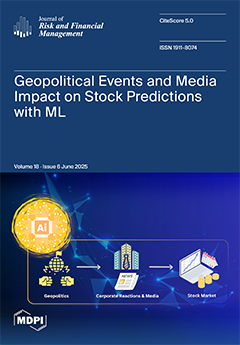This study investigates the relationship between the CEO characteristics and investment–cash flow sensitivity (
ICFS) of Indian manufacturing firms. By using the GMM technique, this study finds that CEO characteristics reduce
ICFS. Further, this study examines the moderating role of business
[...] Read more.
This study investigates the relationship between the CEO characteristics and investment–cash flow sensitivity (
ICFS) of Indian manufacturing firms. By using the GMM technique, this study finds that CEO characteristics reduce
ICFS. Further, this study examines the moderating role of business group-affiliated firms, independent firms (non-business group-affiliated firms), and firm size on the relationship between CEO characteristics and
ICFS. The results reveal that group affiliation moderates the effectiveness of CEO characteristics in reducing
ICFS. In addition to this, independent firms rely more heavily on the individual capabilities of CEOs to overcome financial constraints and mitigate
ICFS, whereas group firms benefit from structural advantages that diminish the relative impact of CEO characteristics on
ICFS. Additionally, this study finds that firm size also moderates the relationship between CEO characteristics and
ICFS. The results reveal that CEO characteristics significantly reduce
ICFS, with a more pronounced effect in small-sized independent firms compared to their larger counterparts. However, in group-affiliated firms, CEO characteristics have a minimal effect on
ICFS, and this impact remains consistent across small and large group firms. These findings offer valuable insights for firms, lending institutions, and investors, emphasizing the role of CEO characteristics in shaping financial decision making, especially in independent and smaller firms.
Full article




